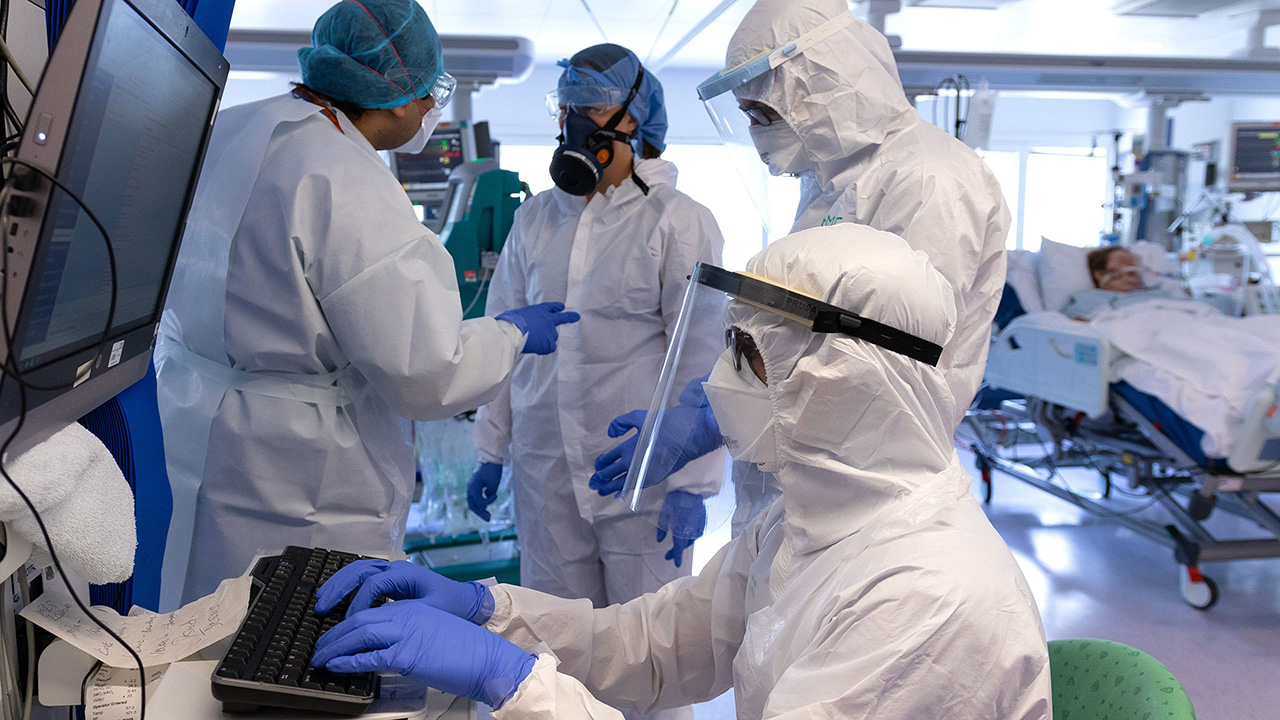What do you see when you think back to hospital wards during the heath of the COVID-19 pandemic? Overcrowded, understaffed, chaos. What would the risk be for hospitalised patients not yet infected with SARS-CoV2 in those days?
Last week Ben Cooper and colleagues published a great study in Nature, featuring impressive data volume, clever thinking, controls, and lots of results.
They quantified the amount of hospital-acquired COVID-19 infections during the second wave in the UK (June 2020-March 2021). They could use ALL the data from 356 hospitals, 100,000 beds (>98% of NHS total), and 859,000 FTE healthcare workers (2.5% of the working-age population of England)). Classification of SARS-CoV-2 infection was determined by the interval between hospital admission and date of PCR-confirmed infection: community-onset infections <3 days; indeterminate 3–7 days; probable or definite healthcare-associated >7 days.
They estimated that there were between 95,000 and 167,000 definite healthcare-associated COVID-19 infections. With 9.2 million hospital admissions from 5.0 million individual patients, this means that between 1% and 2% of them had a hospital-acquired SARS-CoV-2 infection.
So, what determined the risk of infection per hospital? First, the number of infected patients in the previous week (1 patient with a newly identified healthcare-associated infection the previous week was associated with a further 1.07 (95% CrI 0.93, 1.19) hospital-acquired infections in patients the following week. Availability of single rooms was protective; a 15% increase in the percentage of beds as single rooms had an incidence rate ratio (IRR) of 0.91 (0.87, 0.97).
What about room ventilation? No data on ventilation, but in 96 trusts they had data on “heated volume per bed”, the volume of heated areas of trust buildings divided by the number of beds. Something measured for economic reasons, here used as a proxi for room ventilation (clever thinking!). An increase of heated volume per bed of 207 m3 was associated with an IRR of 0.90 (0.84, 0.97).
To strengthen their findings they used a negative control outcome: the number of patients admitted for community-acquired COVID-19-infection, which would not be expected to be influenced by hospital-based exposures. And indeed, there was no strong association with healthcare-associated infections or single room provision. However, heated volume per bed had similar negative associations with the control outcome, and the authors are, therefore, cautious in their consideration whether the ventilation associations reflect direct causal effects.
The study illustrates the strength of unrestricted data availability (plus excellent epidemiology and modelling) to inform future public health practices. Unfortunately, such data availability remains a major limiting factor in many countries, including mine.
Photo: COVID-19 ICU at St Mary’s Hospital (Ben Pruchnie, Imperial College Healthcare NHS Trust)

